In need of some beautiful foliage to brighten up your windowsills? You might just love Begonia maculata, also known as the polka dot Begonia or spotted Begonia, which has managed to take the houseplant world by storm over the past few years. Not surprising with those elegant, dotted leaves!
Keep reading for everything you need to know about Begonia maculata care, propagation, the different cultivars you’ll find out there and more.
| Common name(s) | Polka dot plant, polka dot Begonia, angelwing Begonia, spotted Begonia, dotted Begonia, trout Begonia, trout leaf Begonia |
| Scientific name | Begonia maculata, Begonia maculata ‘Wightii’ |
| Family | Begoniaceae |
| Height and spread | Up to 60 inches high and 20 inches wide |
| Light | Bright indirect |
| Soil type | Well-draining |
| Water | Keep lightly moist |
Disclosure: If you shop from my article or make a purchase through one of my links, I may receive commissions on some of the products I recommend.

About Begonia maculata
Natural habitat
Like many of the houseplants we like to grow in our homes (Ctenanthe, Maranta, and Calathea makoyana, for instance), Begonia maculata naturally occurs in Southeastern Brazil. It’s also an introduced species in a few other Central and South American countries; it can be found as far north as Mexico and as far south as Argentina.
In its natural habitat, this species grows in rainforests. Its natural growth zone in Brazil is described as the Atlantic rainforest, which is characterized by its higher altitudes, stable temperatures and wet climate.
Did you know? Begonia maculata, like other Begonias, is traditionally used as a medicinal plant. In Chinese medicine, it’s described to be a diuretic and detoxifying agent.
Description
Begonia maculata is a cane Begonia. This is a subgroup within the genus known for its semi-shrubby growth pattern and cane-like stems. Cane Begonias have joints on their stems that resemble bamboo, and flowers bloom from these joints. Their elongated leaves are sometimes referred to as “angel wings.” (You’ll sometimes see the plant labeled as an angelwing Begonia.) In the wild form, these leaves are solid green or feature some light spotting.
The plant we know as the polka dot Begonia, a cultivar officially named Begonia maculata ‘Wightii’, is the product of selective cultivation. It sports much larger dots on its dark green leaves, hence the name! This is really a very attractive and dramatic plant, with the dots shining silvery in the sunlight and light to deep red coloration on the backs of the leaves.
This is not one of the Begonia species you’d grow specifically for its flowers, but it does produce pretty little blooms with the right care. The flowers form in clusters and are white to pink, with bright yellow stamens.

Begonia maculata varieties
Although Begonia maculata’s wild form is already pretty nice to look at, nurseries have managed to produce quite a few different cultivars through selective cultivation. The most well-known one is Begonia maculata ‘Wightii’, which as I mentioned, is known as the polka dot Begonia. This is the variety that gained the species so much popularity in the houseplant hobby, but it’s actually not the only one.
You’ll recognize a ‘Wightii’ from the dark red backs of its leaves (although this can lighten a bit if the lighting is not ideal) and the fact that its uniform, relatively large dots never touch the edges of the leaves. Its flowers are white.
Some other Begonia maculata varieties you might stumble upon if you do some searching are:
- Begonia maculata ‘Annan Grace’: Mixed dot sizes which can touch the edges of the leaves. The backs are green on the edges and red in the middle, while the flowers are white with a very slight pink tinge to them.
- Begonia maculata ‘Silver Spot’: Features silver dots of different sizes splashed all over the leaves with red undersides.
- Begonia maculata ‘Medora’: Small medium-green leaves covered with silver spots of different sizes and clusters of bright pink flowers.
- Begonia maculata ‘Raddi’: Tiny dots on lighter green leaves with light, orange-red backs and white to pink flowers.
- Begonia maculata ‘Flamingo Queen’: Mixed dot sizes which can touch the leaf edges. The backs of the leaves are greenish to orange-red with dark red leaf veins. The flowers are a spectacular flamingo shade of pink!
On top of these “pure” maculatas, there are also some hybrids out there, although I’ve never seen any of them in person. It’s actually quite difficult when it comes to Begonias in general to identify which cultivar or hybrid you’re dealing with, and that’s no different for Begonia maculata.
Keep in mind that none of the varieties discussed above are quite as common as the ‘Wightii’ cultivar, and for most folks, they’re not different enough to warrant searching for them. If you’re interested in growing one of these, you’ll probably have to look into buying cuttings from other houseplant enthusiasts.
Did you know? You’ll also see plants referred to as Begonia maculata ‘Tamaya’. The ‘Tamaya’ bit doesn’t indicate a cultivar, but the way the plant is grown! Most cane or angelwing Begonias can be grown in ‘Tamaya’ form, which looks like a little tree.

Where to buy Begonia maculata:
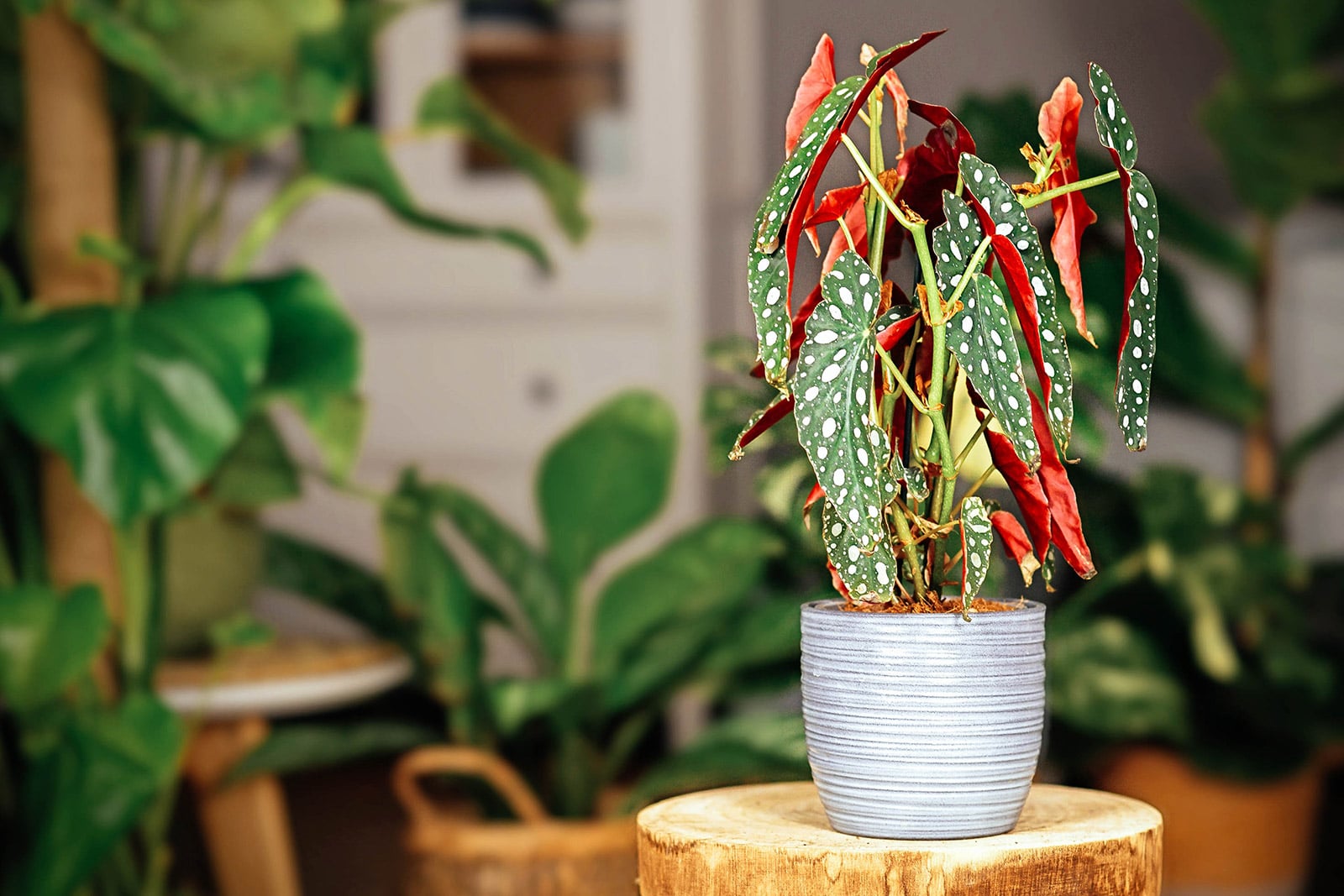
Caring for Begonia maculata
Light and temperature
Like most jungle plants, your polka dot Begonia will appreciate bright, indirect light and to be kept nice and toasty. You should put your plant on a windowsill, or at least close to one: These are sometimes touted as low-light plants, but they’re really not.
ou’ll quickly notice yours growing lanky and losing some of that beautiful leaf coloration if it’s not getting enough light, which is a shame for such a stunning plant.
A bit of direct sun is not an issue for your polka dot Begonia indoors as long as you don’t overdo it. Just acclimate it over the course of a few weeks if you’d like to keep it in a higher light spot in your home, or you may notice the leaves fading and crisping from the excess light.
The areas this Begonia species can naturally be found in tend to get stable temperatures of 70°F or more year-round. This means room temperature is perfect for your plant! Do protect it from drafty windows, A/C units, heaters and anything else that could cause the temperature to fluctuate. Begonia maculata is prone to leaf loss when unhappy.
Observation: My Begonia maculata does fine when exposed to temperatures around 57°F, though with very high humidity (75 percent or up). I wouldn’t let temps drop much lower, though.
Water and humidity
This is where things go south for many new Begonia enthusiasts, as these plants are a bit more finicky about soil moisture levels than many others.
If you tend to overwater, which is the case for most people, you may into issues with leaf loss.
If you tend to underwater (like yours truly, whoops!), you may… also run into issues with leaf loss, as well as brown tips on your polka dot Begonia’s leaves.
The difference is that overwatering usually results in sickly yellow foliage before it falls off, while underwatering can cause perfectly healthy-looking leaves to drop.
So how do you keep these guys happy? Light is a big part of it. A houseplant that receives plenty of light will be a lot more forgiving in terms of watering. Other than that, it’s a matter of keeping the soil lightly moist; you can let the top inch or two dry out before watering again. (Use a moisture meter to help you determine moisture levels.)
Don’t worry if your polka dot Begonia drops a few leaves while you figure out its watering needs. It happened to mine as well, but it looks great now that we’ve come to an “understanding.”
Another factor many struggle with is humidity. Cane Begonias like this one are native to the tropics, where it rains plenty and humidity is very high all year round. Our homes? Not so much, especially in winter. You may want to invest in a humidifier to keep things above 50 percent humidity if you really want to see your tropical houseplants thrive. An inexpensive digital hygrometer (this is the one I use) can also help you determine your home’s relative humidity.
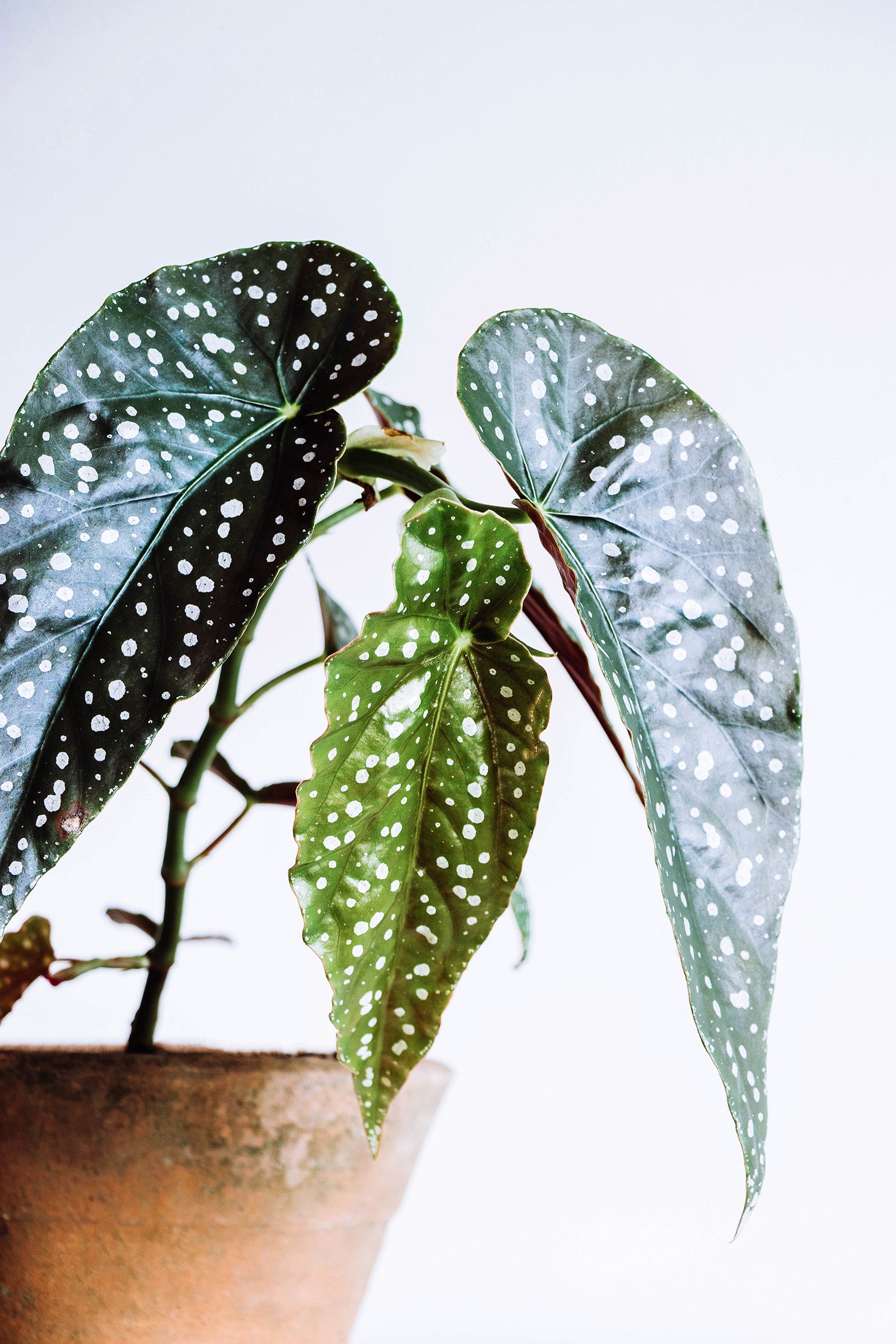
Soil and planting
Although polka dot Begonias like some moisture, their soil should never be soggy. Waterlogged soil is a fast-track to root rot and a dead plant! Although these guys aren’t too fussy about soil mixes and do fine in normal houseplant potting soil, you should add some gritty material for proper drainage. I recommend adding 10 to 20 percent perlite, orchid bark, or pumice to your potting soil to loosen it up.
As for planting, anything goes, as long as the planter has a drainage hole in the bottom. Begonias like this species don’t tend to grow a very large root system, so a huge pot isn’t necessary.
Recommended products for Begonia maculata plant care:
- FoxFarm Ocean Forest Potting Soil
- Better-Gro Special Orchid Potting Mix
- Perfect Plants Organic Perlite
- Nature’s Footprint Pumice Soil Amendment
- ThermoPro Digital Hygrometer
- Classy Casita Soil Moisture Meter
Fertilizing
Cane Begonias aren’t heavy feeders, but these guys will still definitely appreciate a regular dash of fertilizer. Use a liquid houseplant fertilizer diluted to half strength while watering once or twice a month during the growing season.
Stop feeding your polka dot Begonia during winter. It won’t be able to use the fertilizer you give it, and overfeeding can cause those typical brown leaf tips that frustrate Begonia enthusiasts so much.
Recommended fertilizers for Begonia maculata:
- Houseplant Resource Center Liquid Fertilizer for Houseplants
- Instant Biologics Instant Plant Food (Fizzing Nutrient Tablets)
- Maxsea All-Purpose Seaweed Plant Food
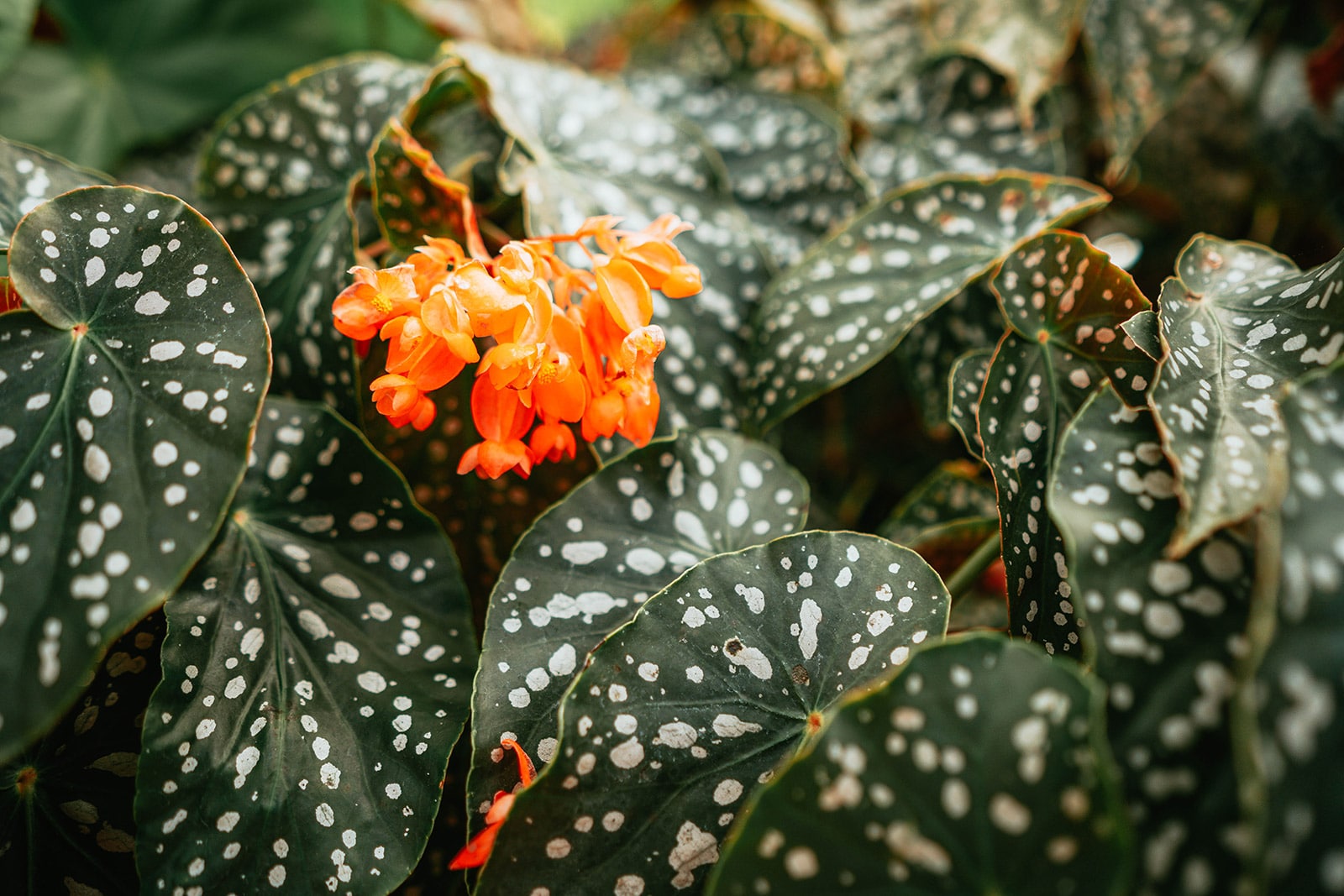
Pruning
Begonia maculata is a species that does benefit visually from the occasional pruning in many cases. Even when the plant gets plenty of light, it can sometimes decide to send out stretchy stems, which kind of ruins the nice bushy appearance.
No matter! Wait until the next growing season rolls around (spring or summer). Then, all you have to do is use some clean pruning shears to cut the stem wherever you’d like and either root it in water before planting or just pop it straight back into the planter. It should keep growing as usual and help keep your polka dot Begonia looking full.
Dividing or repotting
Dividing or repotting, that’s the question! If your polka dot Begonia has outgrown its container, what to do is up to you. Most of these plants consist of multiple stems planted together by the nursery, so you can opt to take a few of these out and pot them up separately.
Just take the plant out of its pot, separate a few stems, and place the rest back in the original planter with some nice fresh soil. The stems you took out will already have their own root system, so they can be potted up and will keep growing as usual.
If you do want to repot your plant in one piece, you can do so during spring or summer. Choose a planter that’s an inch or so larger in diameter than the previous one.
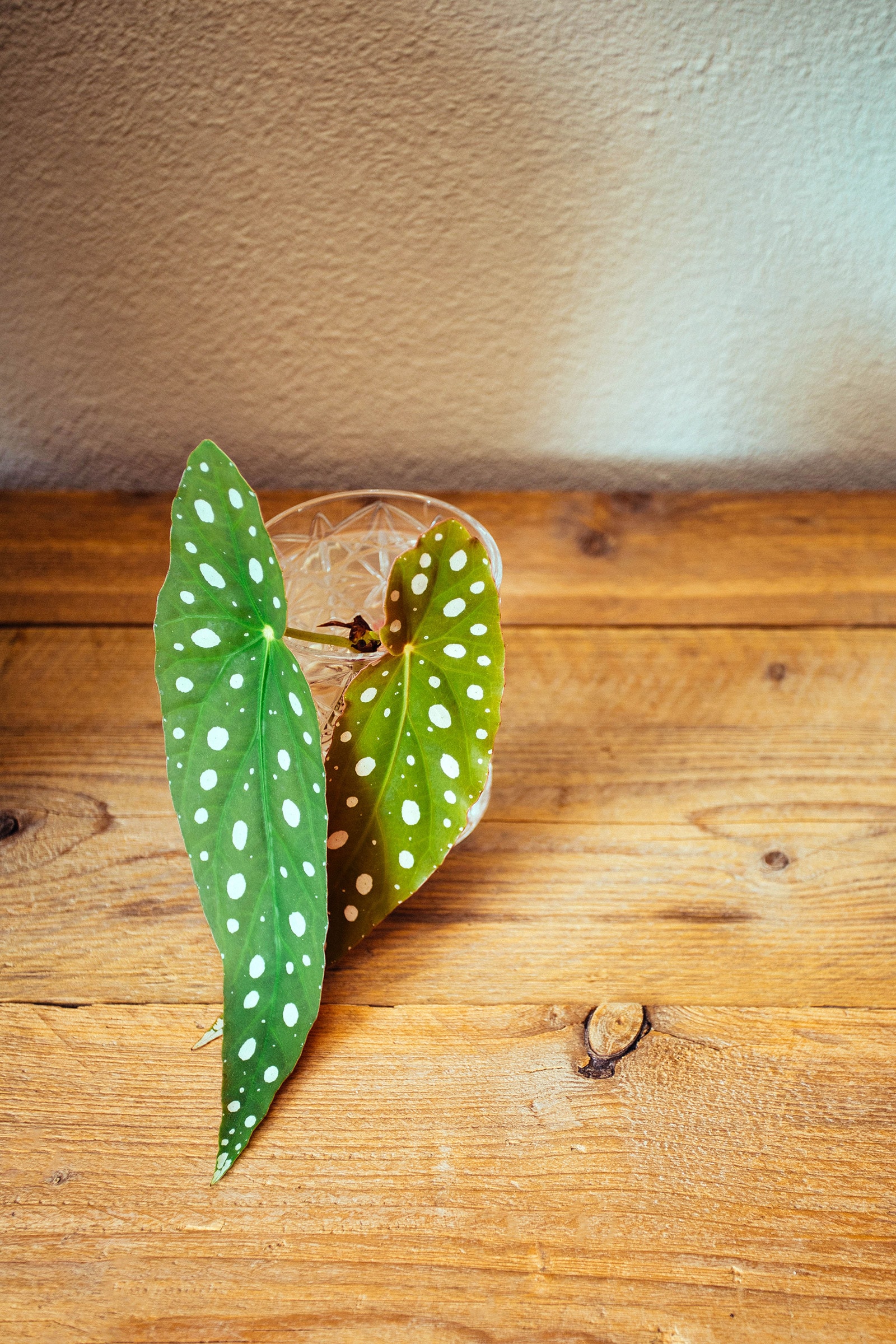
Propagating Begonia maculata
Propagating Begonias, including the polka dot Begonia, really couldn’t be easier. The division method discussed above is one of the easiest ways to do it. Another option is the method I mentioned in the section on pruning, which involves taking the pruned sections (which are basically stem cuttings) and rooting them in water or soil.
Did you know? Technically a Begonia stem cutting doesn’t even have to include leaves. You can chop the canes into sections of at least an inch or two and root them in moist sphagnum moss or your preferred medium. As long as there’s an eye (a bump that roots or leaves can grow from) on the section, it has the capacity to resprout.
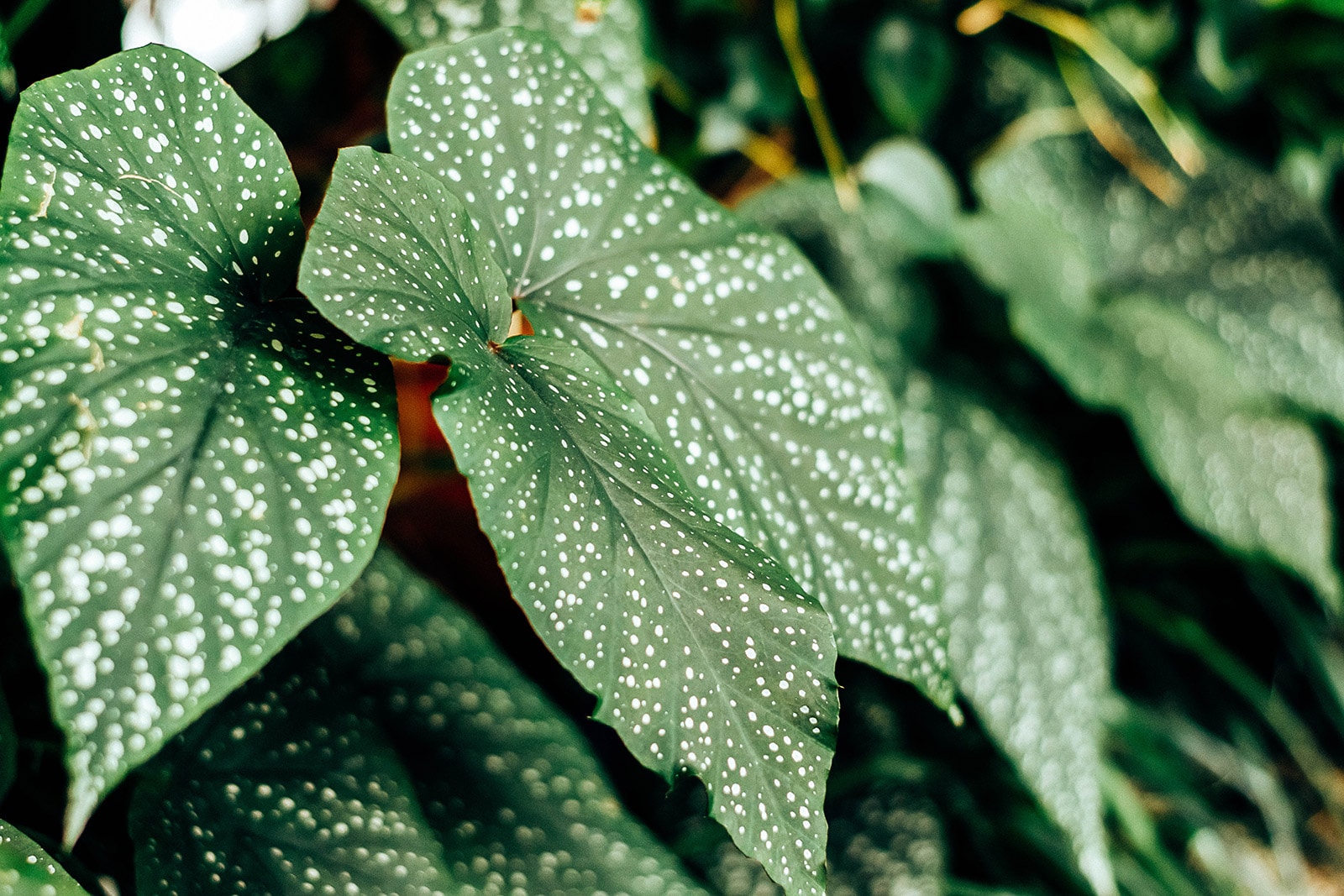
Common questions about Begonia maculata care
Help, my Begonia maculata is dropping leaves!
Don’t panic! It happens to the best of us. If your Begonia isn’t in shock from being moved (which can happen if you bring a new one home) or cold exposure, review your watering schedule.
Is it winter? Your plant’s soil will likely dry a bit more slowly than in summer, meaning it needs less frequent watering. In summer, you may have to water twice as often, which means you may have waited too long.
Is Begonia maculata toxic to cats and dogs?
Yes, this species is considered toxic, although your furry friend is very unlikely to drop dead after a nibble. As with many other houseplants, the problem lies in irritating calcium oxalates, which can cause a burning sensation in the mouth as well as vomiting.
Offer water and keep an eye on your pet if you think it got into your polka dot Begonia. Call a vet if you’re worried.
Sources:
https://powo.science.kew.org/taxon/urn:lsid:ipni.org:names:105130-1
http://reflora.jbrj.gov.br/reflora/listaBrasil/FichaPublicaTaxonUC/FichaPublicaTaxonUC.do?id=FB5663
https://libproject.hkbu.edu.hk/was40/detail?lang=en&record=2&channelid=1288&searchword=parent_latin%3DBegonia


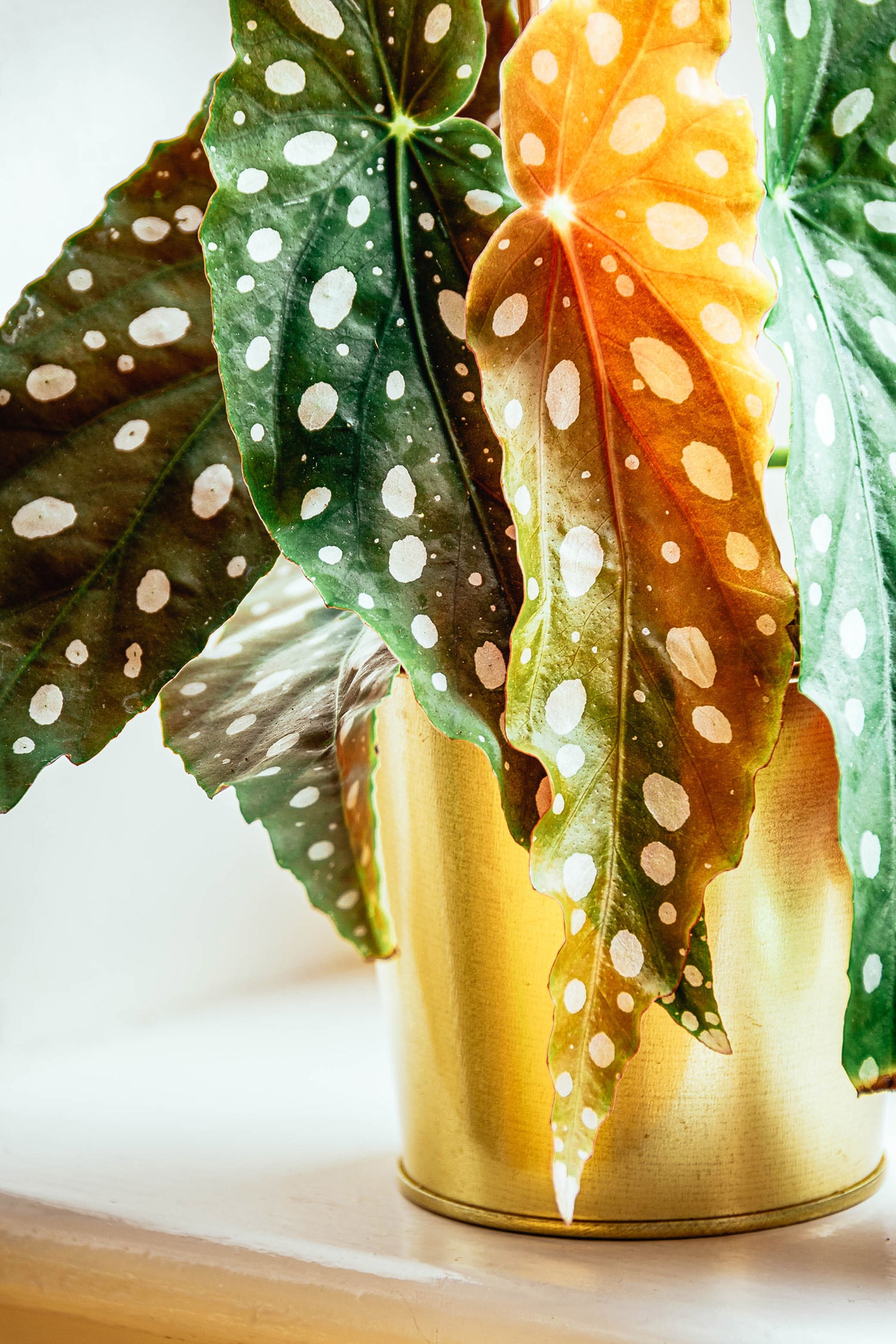













My begonia maculata is beautiful, healthy and I’ve propagated others, but it’s never bloomed. Advice on what I can try? Thanks.
Sandra